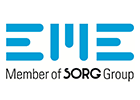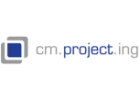The NSG Group and University of Cambridge are collaborating on new glass applications, while using the latest technology to realise the future of manufacturing.
NSG, which owns Pilkington UK, is currently working with the University’s Fluids in Advanced Manufacturing team (FIAM) to establish a way of printing conductive materials onto wide areas of curved glass surfaces.
Conductive materials can currently only be effectively printed onto flat glass surfaces.
If successful, this innovation is set to enable the printing of metallic nano inks at high precision across curved glass, introducing new applications for glass in automotive and architectural sectors by increasing the potential functionality of glazing.
New uses include helping detect pollution, incorporating heating elements or as digital signage.
The research aims to see the conductive materials applied to curved glass surfaces, such as car windscreens, using inkjet printing technology at the final stage of the manufacturing process.
This process will help make high tech curved glass more cost effective to manufacture, while helping it to be increasingly customisable for customers – boosting its marketability.
For the first phase of the research, the partners are using virtual reality to model and design a laboratory that uses robotic technology to print the conductive materials onto curved glass surfaces. Using robots, printing the nano inks will be done with high precision and speed, while accounting for the curvature of the glass.
Dr Su Varma, R&D incubator academic programme director at the NSG Group European Technical Centre, said: “This is an exciting project that has the potential to extend the boundaries of glass’ use in car manufacturing and building design.
“It allows high-tech applications of glass to not be limited to flat surfaces, expanding opportunities for architects, while revolutionising the role that glass can play in vehicles.”

























